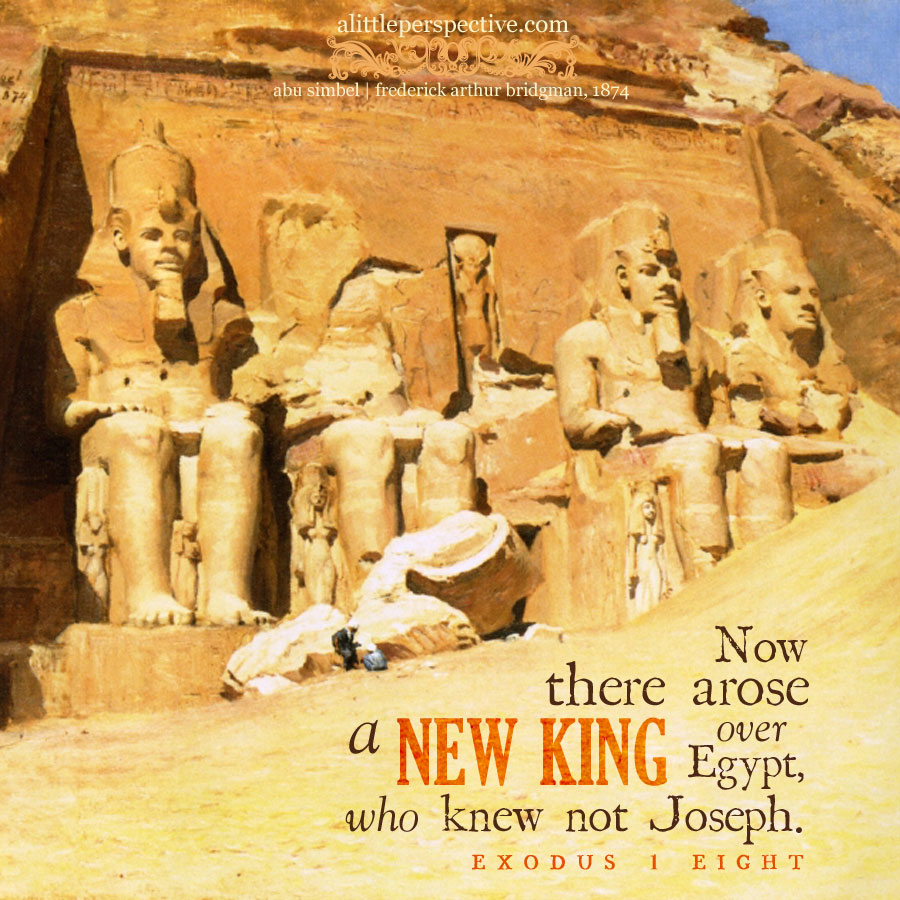Read Exodus 1:8-22 at Bible Gateway.
Hebrew paragraph division
Exo 1:8-22 {p} Pharaoh opposes Israel’s increase
Exo 1:8-22 chiastic structure
The takeaway, is that even if the enemy is opposing the people of God or targeting the people of God, the blessing of God is in force and cannot be negated or countermanded by him!
Now for some history:
I believe the Pharaoh who enslaved the Hebrews was Ramesses the Great. One of the best Scriptural evidences for this identification is found in the central axis of the A pair:
Exo 1:11b And they built for Pharaoh store-cities, Pithom and Raamses;
Which history corroborates:
The early part of his reign was focused on building cities, temples and monuments. He established the city of Pi-Ramesses in the Nile Delta as his new capital and main base for his campaigns in Syria. – Ramasses II (the Great), Infogalactic.com
In fact, the personal name for Pharaoh Ramasses is written five times in Torah. This dates the writing of Torah and the lifetime of Moses to the same epoch in which Ramesses reigned, as it was not a dynastic name before his family arose as rulers over Egypt, being distinct from the previous dynasty who knew Joseph (Exo 1:8). Thus Torah could not have been written earlier than his reign. Nor could it have been edited in much later as some chronologers claim, as not a jot or tittle of Torah has been changed or edited by copyists from the Torah scroll which Moses gave to the Levites to keep on the day of his death. (Did you know that if a copyist even mistakenly altered one jot or one tittle of the Torah scroll, the entire thing was taken away and burned, and he would have to start over? True fact.)
This also explains the name of Ramasses appearing in Genesis:
And Joseph placed his father and his brethren, and gave them a possession in the land of Egypt, in the best of the land, in the land of Rameses, as Pharaoh had commanded. Gen 47:11
Moses wrote Exodus through Deuteronomy. He also wrote Genesis, but for Genesis, he had family records (toledoths) handed down from father to son going back to Adam. For Genesis, he edited the records together to make a single coherent book. The appearance of the Ramases name in Genesis dates this editing to at least Ramasses’ reign, but certainly not before it, and impossible to date after the lifetime of Moses, for the reason mentioned above. Torah has literally been set in stone since the lifetime of Moses. (Other examples of Moses editing place names to their nomenclature as was known in his lifetime are found in Genesis. One example is in Gen 35:6).
Here I have to note that the pharaoh who enslaved the Hebrews, was not the same pharaoh who refused to let the people of Israel go. Moses was born as a baby under the pharaoh who enslaved the Hebrews, and God did not send him back to Egypt to deliver the people until 80 years later.
More evidence from history:
Moses and my bias
The Egyptian Problem – James B. Jordan, Biblical Chronology Newsletter (excellent, excellent explanation of why the secular historians are so wrong on Egyptian history)
Searching for Moses – Answers in Genesis (I love AiG, but this particular case is a good example of trying to make the biblical history fit the secular Egyptian chronology, and I think we need to just admit – the Scripture is true, truth does not contradict, and we can trust the history recorded in the unchanged and unaltered record of Torah.)
Patterns of Evidence: Exodus (the archaeological evidence for the biblical history)
My review of Patterns of Evidence: Exodus


















So very interesting and delighted with insight at such weighty links to informations … you are amazing … oh if this was taught in public schools where young people would see, hear, and be saved .. love the. Blessings of God work in any place on this earth even in severe circumstances he is with us .. bless you dear heart
Aw, thank you for the kind comments Kathy. Seriously, we are working on restoring these truths to our children, one homeschool at a time. <3